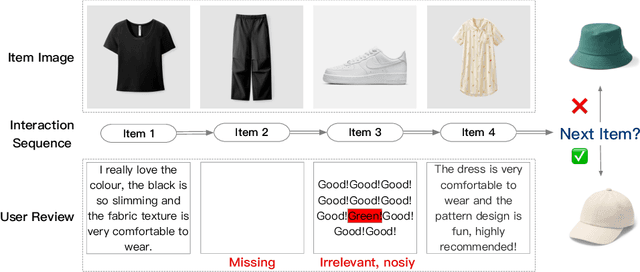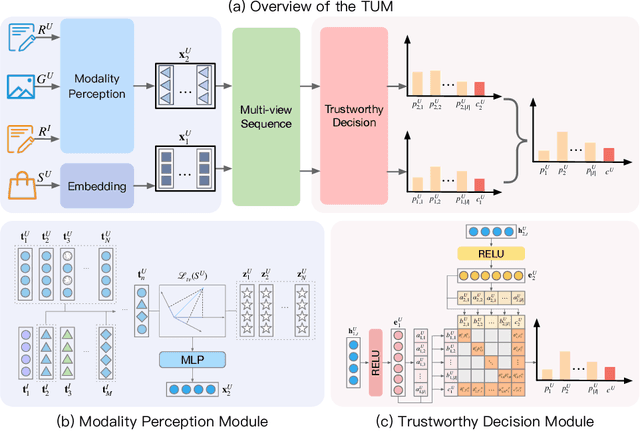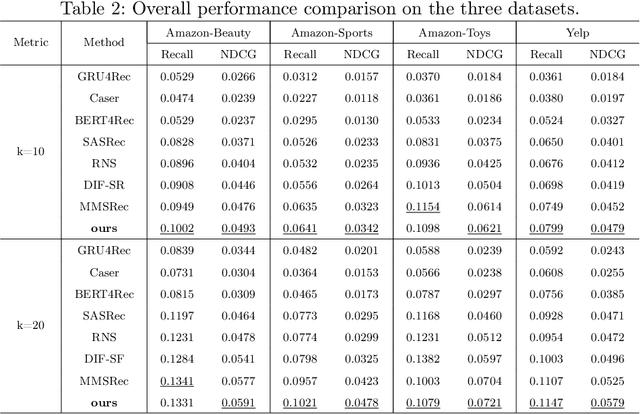Cai Xu
Gradient Rectification for Robust Calibration under Distribution Shift
Aug 27, 2025Abstract:Deep neural networks often produce overconfident predictions, undermining their reliability in safety-critical applications. This miscalibration is further exacerbated under distribution shift, where test data deviates from the training distribution due to environmental or acquisition changes. While existing approaches improve calibration through training-time regularization or post-hoc adjustment, their reliance on access to or simulation of target domains limits their practicality in real-world scenarios. In this paper, we propose a novel calibration framework that operates without access to target domain information. From a frequency-domain perspective, we identify that distribution shifts often distort high-frequency visual cues exploited by deep models, and introduce a low-frequency filtering strategy to encourage reliance on domain-invariant features. However, such information loss may degrade In-Distribution (ID) calibration performance. Therefore, we further propose a gradient-based rectification mechanism that enforces ID calibration as a hard constraint during optimization. Experiments on synthetic and real-world shifted datasets, including CIFAR-10/100-C and WILDS, demonstrate that our method significantly improves calibration under distribution shift while maintaining strong in-distribution performance.
Conf-GNNRec: Quantifying and Calibrating the Prediction Confidence for GNN-based Recommendation Methods
May 22, 2025Abstract:Recommender systems based on graph neural networks perform well in tasks such as rating and ranking. However, in real-world recommendation scenarios, noise such as user misuse and malicious advertisement gradually accumulates through the message propagation mechanism. Even if existing studies mitigate their effects by reducing the noise propagation weights, the severe sparsity of the recommender system still leads to the low-weighted noisy neighbors being mistaken as meaningful information, and the prediction result obtained based on the polluted nodes is not entirely trustworthy. Therefore, it is crucial to measure the confidence of the prediction results in this highly noisy framework. Furthermore, our evaluation of the existing representative GNN-based recommendation shows that it suffers from overconfidence. Based on the above considerations, we propose a new method to quantify and calibrate the prediction confidence of GNN-based recommendations (Conf-GNNRec). Specifically, we propose a rating calibration method that dynamically adjusts excessive ratings to mitigate overconfidence based on user personalization. We also design a confidence loss function to reduce the overconfidence of negative samples and effectively improve recommendation performance. Experiments on public datasets demonstrate the validity of Conf-GNNRec in prediction confidence and recommendation performance.
ShieldGemma 2: Robust and Tractable Image Content Moderation
Apr 01, 2025Abstract:We introduce ShieldGemma 2, a 4B parameter image content moderation model built on Gemma 3. This model provides robust safety risk predictions across the following key harm categories: Sexually Explicit, Violence \& Gore, and Dangerous Content for synthetic images (e.g. output of any image generation model) and natural images (e.g. any image input to a Vision-Language Model). We evaluated on both internal and external benchmarks to demonstrate state-of-the-art performance compared to LlavaGuard \citep{helff2024llavaguard}, GPT-4o mini \citep{hurst2024gpt}, and the base Gemma 3 model \citep{gemma_2025} based on our policies. Additionally, we present a novel adversarial data generation pipeline which enables a controlled, diverse, and robust image generation. ShieldGemma 2 provides an open image moderation tool to advance multimodal safety and responsible AI development.
An Oversampling-enhanced Multi-class Imbalanced Classification Framework for Patient Health Status Prediction Using Patient-reported Outcomes
Nov 16, 2024



Abstract:Patient-reported outcomes (PROs) directly collected from cancer patients being treated with radiation therapy play a vital role in assisting clinicians in counseling patients regarding likely toxicities. Precise prediction and evaluation of symptoms or health status associated with PROs are fundamental to enhancing decision-making and planning for the required services and support as patients transition into survivorship. However, the raw PRO data collected from hospitals exhibits some intrinsic challenges such as incomplete item reports and imbalance patient toxicities. To the end, in this study, we explore various machine learning techniques to predict patient outcomes related to health status such as pain levels and sleep discomfort using PRO datasets from a cancer photon/proton therapy center. Specifically, we deploy six advanced machine learning classifiers -- Random Forest (RF), XGBoost, Gradient Boosting (GB), Support Vector Machine (SVM), Multi-Layer Perceptron with Bagging (MLP-Bagging), and Logistic Regression (LR) -- to tackle a multi-class imbalance classification problem across three prevalent cancer types: head and neck, prostate, and breast cancers. To address the class imbalance issue, we employ an oversampling strategy, adjusting the training set sample sizes through interpolations of in-class neighboring samples, thereby augmenting minority classes without deviating from the original skewed class distribution. Our experimental findings across multiple PRO datasets indicate that the RF and XGB methods achieve robust generalization performance, evidenced by weighted AUC and detailed confusion matrices, in categorizing outcomes as mild, intermediate, and severe post-radiation therapy. These results underscore the models' effectiveness and potential utility in clinical settings.
Generalized Trusted Multi-view Classification Framework with Hierarchical Opinion Aggregation
Nov 06, 2024



Abstract:Recently, multi-view learning has witnessed a considerable interest on the research of trusted decision-making. Previous methods are mainly inspired from an important paper published by Han et al. in 2021, which formulates a Trusted Multi-view Classification (TMC) framework that aggregates evidence from different views based on Dempster's combination rule. All these methods only consider inter-view aggregation, yet lacking exploitation of intra-view information. In this paper, we propose a generalized trusted multi-view classification framework with hierarchical opinion aggregation. This hierarchical framework includes a two-phase aggregation process: the intra-view and inter-view aggregation hierarchies. In the intra aggregation, we assume that each view is comprised of common information shared with other views, as well as its specific information. We then aggregate both the common and specific information. This aggregation phase is useful to eliminate the feature noise inherent to view itself, thereby improving the view quality. In the inter-view aggregation, we design an attention mechanism at the evidence level to facilitate opinion aggregation from different views. To the best of our knowledge, this is one of the pioneering efforts to formulate a hierarchical aggregation framework in the trusted multi-view learning domain. Extensive experiments show that our model outperforms some state-of-art trust-related baselines.
Dynamic Evidence Decoupling for Trusted Multi-view Learning
Oct 04, 2024



Abstract:Multi-view learning methods often focus on improving decision accuracy, while neglecting the decision uncertainty, limiting their suitability for safety-critical applications. To mitigate this, researchers propose trusted multi-view learning methods that estimate classification probabilities and uncertainty by learning the class distributions for each instance. However, these methods assume that the data from each view can effectively differentiate all categories, ignoring the semantic vagueness phenomenon in real-world multi-view data. Our findings demonstrate that this phenomenon significantly suppresses the learning of view-specific evidence in existing methods. We propose a Consistent and Complementary-aware trusted Multi-view Learning (CCML) method to solve this problem. We first construct view opinions using evidential deep neural networks, which consist of belief mass vectors and uncertainty estimates. Next, we dynamically decouple the consistent and complementary evidence. The consistent evidence is derived from the shared portions across all views, while the complementary evidence is obtained by averaging the differing portions across all views. We ensure that the opinion constructed from the consistent evidence strictly aligns with the ground-truth category. For the opinion constructed from the complementary evidence, we allow it for potential vagueness in the evidence. We compare CCML with state-of-the-art baselines on one synthetic and six real-world datasets. The results validate the effectiveness of the dynamic evidence decoupling strategy and show that CCML significantly outperforms baselines on accuracy and reliability. The code is released at https://github.com/Lihong-Liu/CCML.
SC2: Towards Enhancing Content Preservation and Style Consistency in Long Text Style Transfer
Jun 07, 2024Abstract:Text style transfer (TST) aims to vary the style polarity of text while preserving the semantic content. Although recent advancements have demonstrated remarkable progress in short TST, it remains a relatively straightforward task with limited practical applications. The more comprehensive long TST task presents two challenges: (1) existing methods encounter difficulties in accurately evaluating content attributes in multiple words, leading to content degradation; (2) the conventional vanilla style classifier loss encounters obstacles in maintaining consistent style across multiple generated sentences. In this paper, we propose a novel method SC2, where a multilayer Joint Style-Content Weighed (JSCW) module and a Style Consistency loss are designed to address the two issues. The JSCW simultaneously assesses the amounts of style and content attributes within a token, aiming to acquire a lossless content representation and thereby enhancing content preservation. The multiple JSCW layers further progressively refine content representations. We design a style consistency loss to ensure the generated multiple sentences consistently reflect the target style polarity. Moreover, we incorporate a denoising non-autoregressive decoder to accelerate the training. We conduct plentiful experiments and the results show significant improvements of SC2 over competitive baselines. Our code: https://github.com/jiezhao6/SC2.
Multimodal Fusion on Low-quality Data: A Comprehensive Survey
Apr 27, 2024



Abstract:Multimodal fusion focuses on integrating information from multiple modalities with the goal of more accurate prediction, which has achieved remarkable progress in a wide range of scenarios, including autonomous driving and medical diagnosis. However, the reliability of multimodal fusion remains largely unexplored especially under low-quality data settings. This paper surveys the common challenges and recent advances of multimodal fusion in the wild and presents them in a comprehensive taxonomy. From a data-centric view, we identify four main challenges that are faced by multimodal fusion on low-quality data, namely (1) noisy multimodal data that are contaminated with heterogeneous noises, (2) incomplete multimodal data that some modalities are missing, (3) imbalanced multimodal data that the qualities or properties of different modalities are significantly different and (4) quality-varying multimodal data that the quality of each modality dynamically changes with respect to different samples. This new taxonomy will enable researchers to understand the state of the field and identify several potential directions. We also provide discussion for the open problems in this field together with interesting future research directions.
TruthSR: Trustworthy Sequential Recommender Systems via User-generated Multimodal Content
Apr 26, 2024



Abstract:Sequential recommender systems explore users' preferences and behavioral patterns from their historically generated data. Recently, researchers aim to improve sequential recommendation by utilizing massive user-generated multi-modal content, such as reviews, images, etc. This content often contains inevitable noise. Some studies attempt to reduce noise interference by suppressing cross-modal inconsistent information. However, they could potentially constrain the capturing of personalized user preferences. In addition, it is almost impossible to entirely eliminate noise in diverse user-generated multi-modal content. To solve these problems, we propose a trustworthy sequential recommendation method via noisy user-generated multi-modal content. Specifically, we explicitly capture the consistency and complementarity of user-generated multi-modal content to mitigate noise interference. We also achieve the modeling of the user's multi-modal sequential preferences. In addition, we design a trustworthy decision mechanism that integrates subjective user perspective and objective item perspective to dynamically evaluate the uncertainty of prediction results. Experimental evaluation on four widely-used datasets demonstrates the superior performance of our model compared to state-of-the-art methods. The code is released at https://github.com/FairyMeng/TrustSR.
Trusted Multi-view Learning with Label Noise
Apr 18, 2024Abstract:Multi-view learning methods often focus on improving decision accuracy while neglecting the decision uncertainty, which significantly restricts their applications in safety-critical applications. To address this issue, researchers propose trusted multi-view methods that learn the class distribution for each instance, enabling the estimation of classification probabilities and uncertainty. However, these methods heavily rely on high-quality ground-truth labels. This motivates us to delve into a new generalized trusted multi-view learning problem: how to develop a reliable multi-view learning model under the guidance of noisy labels? We propose a trusted multi-view noise refining method to solve this problem. We first construct view-opinions using evidential deep neural networks, which consist of belief mass vectors and uncertainty estimates. Subsequently, we design view-specific noise correlation matrices that transform the original opinions into noisy opinions aligned with the noisy labels. Considering label noises originating from low-quality data features and easily-confused classes, we ensure that the diagonal elements of these matrices are inversely proportional to the uncertainty, while incorporating class relations into the off-diagonal elements. Finally, we aggregate the noisy opinions and employ a generalized maximum likelihood loss on the aggregated opinion for model training, guided by the noisy labels. We empirically compare TMNR with state-of-the-art trusted multi-view learning and label noise learning baselines on 5 publicly available datasets. Experiment results show that TMNR outperforms baseline methods on accuracy, reliability and robustness. We promise to release the code and all datasets on Github and show the link here.
 Add to Chrome
Add to Chrome Add to Firefox
Add to Firefox Add to Edge
Add to Edge